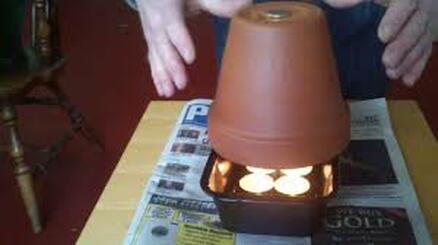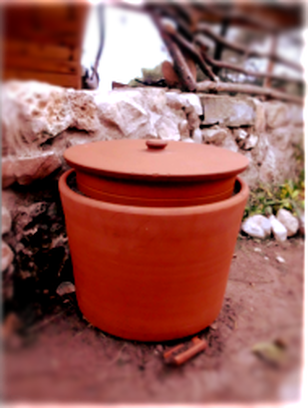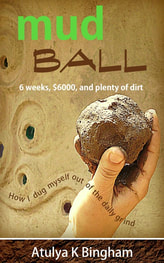The Zeer Fridge
|
Now, not everything you read on-line works, particularly where clay pots are concerned. There was the infamous flower pot-tealight-heater that did the social media rounds not too long ago. When put to the test, I found it to be capable of adequately heating any room, as long as it was a small, well-insulated rabbit hutch.
Thus it was with a pinch or five of skepticism that I embarked on the zeer fridge. One month on however, and I'm sold on the idea. No more warm milk on my muesli. The zeer is a masterpiece of ancient world engineering and thus far (it's still winter in the northern hemisphere) outperforming my solar-run minibar fridge. It's power source? None. It functions thanks to the combined efforts of water and air. THE TEALIGHT HEATER
Did anyone actually get this to work? If so, where did I go wrong? |
The advantages to the zeer are plentiful; not only does it work, but it's a cinch to make, cheap as flower pots and very visibly not an ugly white box, but a comely, round terracotta pot instead.
What you need: Two large terracotta pots - one slightly smaller than the other - sand and water. And a terracotta lid, or metal lid, or damp cloth to cover the top. Just put one pot inside the other as above. Fill in the gap with sand. Close it with the lid and dowse with water. As the water evaporates, the inside of the pot cools to surprisingly low temperatures. Extra points to note: Apparently, the ancient Egyptians had slaves to fan their zeers, but these are hard to come by these days and generally contradict the mission statements of most eco-entrepreneurs. Instead, you should place your pots outside somewhere not only shady, but with plenty of air circulation. You also need to make sure the pot stays constantly wet. All in all, the zeer is so easy and practical you won't even have to bribe someone with a curry to help you. |






